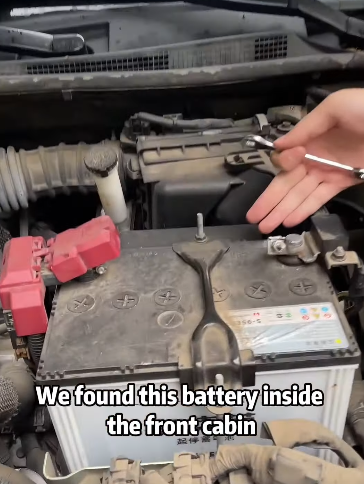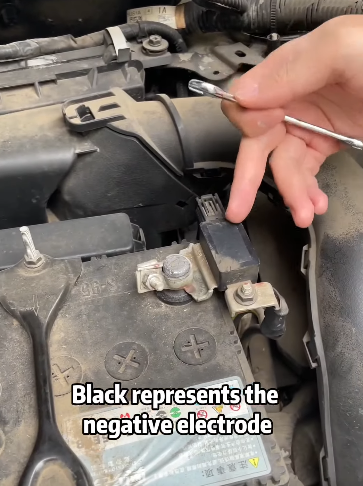
You’re driving along, jamming to your favorite playlist or sipping your morning coffee, when it happens—the dreaded dashboard light flickers on. It’s the “check engine” or another trouble light that most drivers would rather pretend doesn’t exist. Your stomach drops. Thoughts race through your mind: What now? How much will this cost? Is my car going to die?
The good news? Sometimes the fix is so simple it won’t cost you a dime—let alone a dollar.
The Panic Button: What the Trouble Light Actually Means
First, let’s clear the air: a trouble light doesn’t always signal a catastrophic failure. It’s your car’s way of whispering (sometimes shouting), “Hey, something’s off. Maybe look into it?” That little light is linked to the vehicle’s onboard diagnostics system, and it could be triggered by anything from a loose gas cap to a serious engine issue.
Ignoring it, though, can be risky. Even if it’s a minor issue, letting it linger can cause more damage or lead to more expensive repairs. But before you dash to a mechanic or start Googling “engine replacement cost,” let’s walk through some surprisingly easy—and free—fixes.

1. Tighten or Replace the Gas Cap
Believe it or not, the number one cause of a check engine light is a loose, cracked, or missing gas cap. Your car’s fuel system is sealed to prevent vapors from escaping. If the cap isn’t tight, it messes with the pressure, triggering the light.
The fix?
Pull over. Tighten the cap until it clicks several times. Drive around for a day or two. If the light turns off, you just saved yourself a trip to the shop—and possibly $100+ in diagnostic fees.
2. Double-Check Your Battery Terminals
Your car’s electrical system relies heavily on a solid connection to the battery. If the terminals are dirty, corroded, or loose, sensors might misread signals and send false alerts.
The fix?
Pop the hood. Look for white or greenish buildup on the battery terminals. If you have gloves and an old toothbrush (and a bit of baking soda), clean them gently. Or simply wiggle the connections to ensure they’re tight. Cost: $0. Time: 5–10 minutes.
3. Resetting Your Trouble Light
Sometimes the issue that caused the light has already been resolved, but the light just hasn’t caught on yet. In these cases, resetting the system can help.
The fix?
You can disconnect the battery (negative terminal only) for 10–15 minutes to reset the onboard computer. Or, head to an auto parts store—most offer free diagnostic scans. They can clear the code on the spot if no current issue exists. No charge. No stress.

4. Use a Free OBD-II Scanner
Onboard Diagnostic (OBD-II) scanners are devices that read the codes causing your check engine light. Many auto shops will scan your car for free. Or, if you have your own scanner or know someone who does, you can check it yourself.
What’s the benefit?
You’ll know exactly what triggered the light. That way, you won’t get talked into unnecessary repairs. It puts you in control, even if you still take it to a mechanic.
5. Software Glitches Happen
Cars are basically rolling computers. And just like your phone or laptop, their systems can glitch. A temporary error—say, from a bad sensor reading—might turn the light on even if nothing’s wrong.
The fix?
Again, a scan can reveal if the error was a “soft code” that doesn’t indicate a lasting issue. Once reset, the light might never come back on. Total cost: nothing.
6. Air Filter or MAF Sensor Issues
A dirty air filter or a dusty Mass Airflow (MAF) sensor can mess with your engine’s efficiency. Your car might trigger a light just because it’s having trouble “breathing.”
The fix?
Check the air filter (usually in a box near the engine). If it looks gray or clogged, knock out the dust or replace it if you have a spare. Cleaning a MAF sensor takes less than 10 minutes with the right spray (often found for under $10), but if you’re lucky, a quick blowout with air might help enough to reset the light.

7. Low Fluids Can Trigger a Warning
While it’s rare for low fluids alone to trigger the check engine light, modern cars monitor transmission fluid, coolant, brake fluid, and oil levels very closely.
The fix?
Check all your fluid levels. If you’re low, top off. Sometimes, just adding coolant or oil can stabilize sensors and extinguish that glowing light.
8. Faulty or Dirty Sensors
Oxygen sensors, throttle sensors, EVAP sensors—cars have tons of them, and they get dirty over time. Some don’t even need replacing, just cleaning.
The fix?
Use an OBD-II reader to find out which sensor is acting up. Some sensors, like the throttle position sensor, are accessible and easy to clean with the right cleaner. Many times, this quick clean resets the system—and your wallet stays untouched.
9. Drive Cycle Reset
Once you’ve addressed the suspected cause, your vehicle needs to go through a “drive cycle” to reset the onboard diagnostics.
The fix?
Drive your car as you normally would for a few days. The system rechecks itself, and if everything’s okay, the light will turn off on its own.

When It Does Cost Money—But Not Much
If the above methods don’t work, don’t despair. Most minor fixes—like replacing a gas cap or sensor—are low-cost and often DIY-friendly. If you’re not comfortable turning a wrench, local mechanics usually offer affordable inspections (especially if you already have a scan code).
Also, check if your state or insurance plan offers vehicle maintenance perks or reimbursements. Some even offer low-cost repairs tied to emissions checks.

The Power of Knowing Your Vehicle
Many car owners fear that the check engine light = $$$. But in reality, it’s often more like a text message from your car asking for a quick check-in. Learning how to read and respond to it gives you peace of mind—and keeps your cash where it belongs.
So the next time that light pops on, don’t panic. Start with the free fixes. There’s a good chance your car just wants a little attention, not a full-on surgery.
And if you solve it without spending a cent? That’s not just a win for your wallet—it’s a victory for every car owner who’s ever feared the dashboard’s glowing little drama queen.



